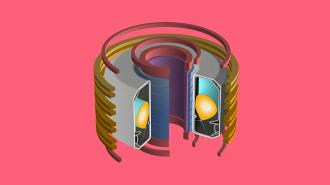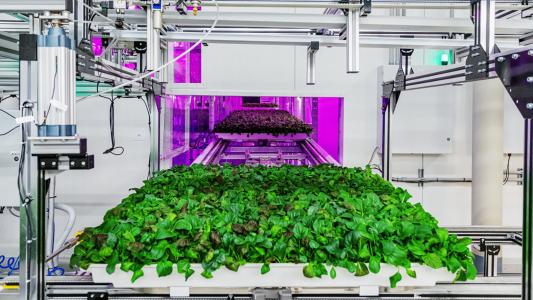DeepMind, a sister company of Google, has co-developed an AI capable of controlling the super-hot plasma inside a tokamak fusion reactor — helping overcome one of the hurdles between us and a future of limitless clean energy.
The holy grail: A tremendous amount of energy is released when two atoms merge into one. That reaction is called nuclear fusion, and it’s what powers the sun and other stars.
Nuclear fusion doesn’t have the drawbacks of today’s major energy sources — it doesn’t produce CO2 emissions or air pollution (like fossil fuels) or long-lasting radioactive waste (like nuclear fission), and it doesn’t rely on intermittent environmental conditions (like wind and solar power) or disrupt ecosystems (like hydroelectric dams).
Nuclear fusion can only take place under extreme heat and pressure.
If we could find a cheap, reliable way to harness the energy from nuclear fusion on Earth, we’d be able to meet humanity’s energy needs basically forever, without damaging the environment.
But that goal is still well beyond our reach today.
That’s because fusion can only take place under extreme heat and pressure, and we’ve yet to design machines that can sustain and control fusion reactions in a way that lets us get more energy from the process than we put in.
The challenge: We are getting closer, though, and one of the most promising fusion reactor designs so far is a hollow, donut-shaped device called a tokamak.
Inside a tokamak, extreme heat and pressure turn gaseous hydrogen fuel into a plasma. Magnetic coils on the outer part of the device trap this plasma, keeping it away from the interior walls.
A control system needs to adjust the voltage on a tokamak’s magnetic coils thousands of times per second.
DeepMind & EPFL
If the magnets can hold the plasma stable long enough, fusion takes place in it, and the interior walls of the tokamak can then absorb the heat that’s released.
Super-hot plasma is incredibly hard to control, though.
“[A] control system needs to coordinate the tokamak’s many magnetic coils and adjust the voltage on them thousands of times per second to ensure the plasma never touches the walls of the vessel, which would result in heat loss and possibly damage,” DeepMind researchers and their collaborators from the Swiss Federal Institute of Technology in Lausanne (EPFL) wrote in a blog post.
The idea: DeepMind used computer simulations to train an AI to control plasma, showing it how plasma reacts when each of the magnetic coils around a tokamak are adjusted.
They tested the AI on the actual plasma inside the variable configuration tokamak (TCV) at the EPFL’s Swiss Plasma Center. It was able to keep the plasma stable for 2 seconds — which doesn’t seem like much, but the machine’s record is 3 seconds.
The AI was also able to force the plasma into many different shapes being studied by plasma physicists, including a “droplet” shape that had never been produced in the TCV before.

It also created these shapes using different and unexpected techniques than what plasma physicists would have done.
“[I]t was still creating the same plasma as we had expected, but it just used the magnetic cores in a completely different way,” EPFL’s Federico Felici told New Scientist.
The big picture: We still have many challenges to overcome before we can start thinking about nuclear fusion as a solution to the world’s energy woes.
Still, this is the first time anyone has used AI to control the plasma inside a nuclear reactor, and the success of the study suggests that algorithms might be able to help us control plasma in fusion reactors and even teach us new ways to manipulate it.
We’d love to hear from you! If you have a comment about this article or if you have a tip for a future Freethink story, please email us at [email protected].






